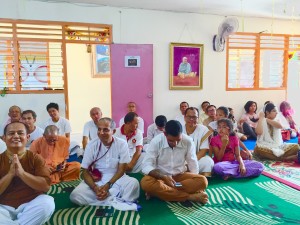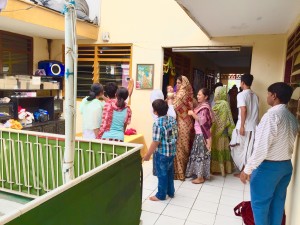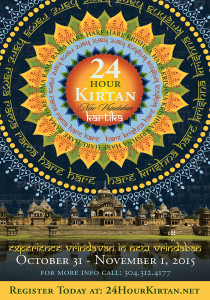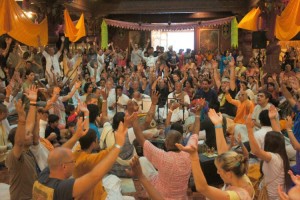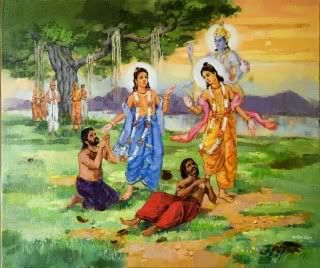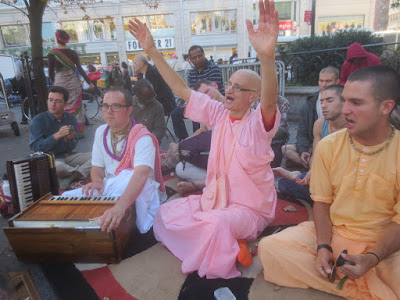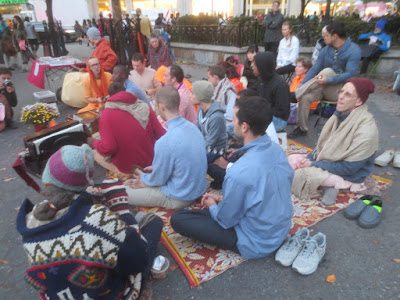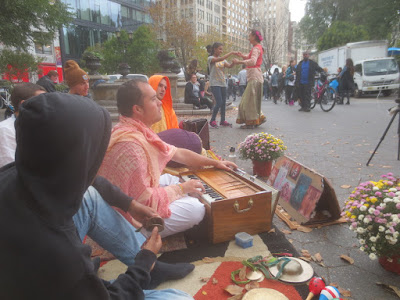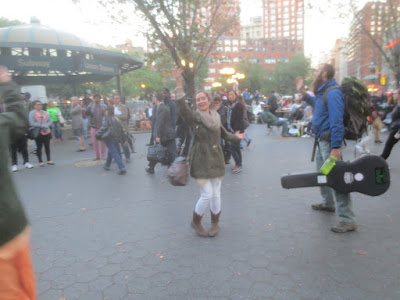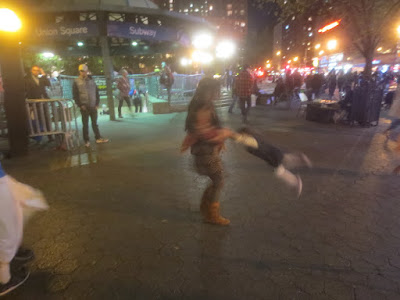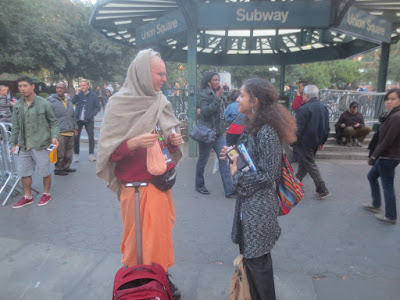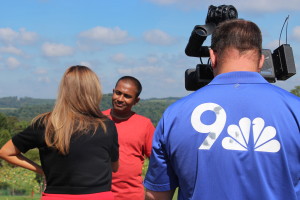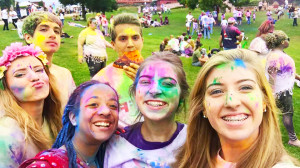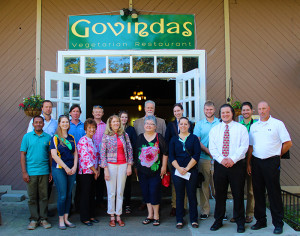I was asked to look into this a few years ago by someone who knew of my research abilities. But I have not been able to until now because of other priorities. But this topic has come up before, that actually there were two different Buddhas that played the part to establish Buddhism and its principles of ahimsa and nonviolence and its monist philosophy.
In the following material, we will look at the evidence that seems to indicate that there was first the Avatara Buddha, the incarnation of Lord Vishnu who appeared near 1800 BCE, and then there was another person who became known as Gautama called Buddha, born around 560 BCE.
1. The first Avatara Buddha established the philosophy of Ahimsa, nonviolence, and convinced those followers of Vedic customs who had become bent toward animal sacrifice to give up such rituals and simply follow him, and become kind to animals. Being an avatara of Vishnu, He did not establish any godless or monist philosophy.
2. The Avatara Buddha was also born of his mother Anjana in what became known as Bodhgaya.
3. The second Buddha known as Gautama, Siddhartha, or Shakyamuni – sage of the Shakyas – was born in Lumbini, now in Nepal, with Mayadevi as his mother. He is the one we often hear about, the prince who left home to do austerities to find enlightenment. He went to Bodhgaya to meditate because of its spiritual potency as the birthplace of the avatara Buddha. Then he became enlightened to the reasons for suffering in this world, and developed a godless way of becoming free from suffering. From that point he established the monist and godless philosophy of Buddhism, which became named after him.
Of course, the Theravadin texts refer to six preceding Buddhas (those who have awakened) as Vipasyin, Sikin, Krakuccanda, Konagamara, and Kashyapa, and Maitreya as the Buddha of the future. But we are not talking of any of these.
4. The reason why these two Buddhas became merged into one identity was partly because Adi Sankaracharya, in discussions with others, related them as one person and did not discriminate between the purpose of one or the other. Sankaracharya developed his own sunya philosophy, which was very much like the Buddhist philosophy, replacing the Buddhist nirvana with his Vedic Brahman, to defeat Buddhism and drive it out of India. He succeeded most effectively. At that time many were leaving Vedic culture altogether and converting to Buddhism. But with this new Mayavadha philosophy from Sankaracharya, Buddhism bowed and the conversions stopped, and Buddhism itself started to decline.
However, those important acharyas who followed Sankaracharya defeated his monist or impersonalist Mayavada philosophy and more clearly defined the Vedic view, such as:
Sri Vishnuswami with his Suddha-advaita-vada,
Ramanujacharya with his Vasistadvaita-vada,
Nimbarkacharya with his Dvaita-advaita-vada,
Madhvacharya with the Dvaita-vada,
Sri Chaitanya with his Acintaya-bheda-bheda-vada,
with further commentary and arguments against Sankaracharya’s impersonalist philosophy by Srila Baladevavidyabhushana and others.
Therefore, no matter how much some schools of thought have clung to the Mayavada philosophy of Sankaracharya, it has been defeated and dismissed many times over. Yet, Sankaracharaya played an important part in paving the way for protecting the Vedic culture by using his own imagined philosophy, based on his own interpretation of some of the Vedic stanzas, to defeat Buddhism at the time.
Much of the evidence that follows comes from a book called Beyond Nirvana: The Philosophy of Mayavadism: A Life History. This was written by Srila Bhakti Prajnan Keshava Gosvami Maharaja of the Gaudiya Math, the person who gave sannyasa initiation to His Divine Grace Srila A. C. Bhaktivedanta Swami. The book was later translated and published in English by Sri Srimad Bhaktivedanta Narayana Maharaja, and published in 2003 in Mathura, India.
The whole book gives a lengthy dissertation on the development, history and present situation of the impersonalist point of view. Chapter Two especially focuses on the evidence for two Buddhas that had existed.
First, however, we should point out that there had always been a conflict in the dates of the Buddha’s birth. One birth is around 560 BCE, but when analyzing the records, there is evidence for a much earlier birth of Lord Buddha, of which I have written before as follows:
Reestablishing the Date of Lord Buddha
(Excerpt from Proof of Vedic Culture’s Global Existence)
Most of us are taught that Buddha was born around 560 to 550 B.C. However, once we start doing some research, we find evidence that this date may be too late. Buddha may have been born much earlier.
For example, in Some Blunders of Indian Historical Research (p. 189), P. N. Oak explains that the Puranas provide a chronology of the Magadha rulers. During the time of the Mahabharata war, Somadhi (Marjari) was the ruler. He started a dynasty that included 22 kings that spread over 1006 years. They were followed by five rulers of the Pradyota dynasty that lasted over 138 years. Then for the next 360 years was the 10 rulers of the Shishunag family. Kshemajit (who ruled from 1892 to 1852 B.C.) was the fourth in the Shishunag dynasty, and was a contemporary of Lord Buddha’s father, Shuddhodana. It was during this period in which Buddha was born. It was during the reign of Bimbisara, the fifth Shishunag ruler (1852-1814 B.C.), when Prince Siddhartha became the enlightened Buddha. Then it was during the reign of King Ajatashatru (1814-1787 B.C.) when Buddha left this world. Thus, he was born in 1887 B.C., renounced the world in 1858 B.C., and died in 1807 B.C. according to this analysis.
Further evidence that helps corroborate this is provided in The Age of Buddha, Milinda and King Amtiyoka and Yuga Purana, by Pandit Kota Venkatachalam. He also describes that it is from the Puranas, especially the Bhagavata Purana and the Kaliyurajavruttanta, that need to be consulted for the description of the Magadha royal dynasties to determine the date of Lord Buddha. Buddha was the 23rd in the Ikshvaku lineage, and was a contemporary of Kshemajita, Bimbisara, and Ajatashatru, as described above. Buddha was 72 years old in 1814 B.C. when the coronation of Ajatashatru took place. Thus, the date of Buddha’s birth must have been near 1887 B.C., and his death in 1807 B.C. if he lived for 80 years.
Professor K. Srinivasaraghavan also relates in his book, Chronology of Ancient Bharat (Part Four, Chapter Two), that the time of Buddha should be about 1259 years after the Mahabharata war, which should make it around 1880 B.C. if the war was in 3138 B.C. Furthermore, astronomical calculations by astronomer Swami Sakhyananda indicates that the time of the Buddha was in the Kruttika period, between 2621-1661 B.C.
Therefore, the fact that Buddha lived much earlier than what modern history teaches us has a number of ramifications. First, the time of the Buddha’s existence is underestimated by about 1300 years. Secondly, this means that Buddhism was in existence in the second millennium B.C. Thirdly, we also know Buddha preached against the misused Vedic rituals of animal sacrifice. Such misuse or misinterpretation of something in a culture generally only happens after a long period of prominence. So the purer aspect of Vedic culture must have been around for many hundreds if not thousands of years before its tradition began to be misused. Therefore, this pushes the Vedic period to a much earlier time from that of Buddha than originally figured, and much earlier than many people have calculated. And lastly, everything else we have figured according to the time frame of the appearance of Buddha now has to be re-calculated. Again we find that history has to be adjusted away from the speculations of modern researchers, and that many of the advancements in society and philosophy, as outlined in the Vedic texts, had taken place much earlier than many people want to admit.
* * *
However, now with new evidence, we can begin to see that the above information may be quite right for the timing of the Buddha Avatara, but the later birth figure of 560 BCE may also be correct for the second Buddha. The first Buddha avatara established a form of Buddhism by revolting against those rituals that accepted animal sacrifice and emphasized the godly principles of ahimsa, nonviolence based on recognizing the Divine in all beings, and divinity of all souls, arousing compassion for all. The second Buddha styled what became Buddhism that was known for its monist or impersonalistic philosophy (that God, the Absoute Truth, is inert, nonactive, and without any characteristics) and that reaching the same inert and non-active state of nirvana is the goal for attaining freedom from all suffering.
To give further information in this regard, I will now simply include the second chapter of Beyond Nirvana: The Philosophy of Mayavadism: A Life History, as follows, with my own few comments in brackets:
Two Buddhas
Shakya Simha Puddha and the Vishnu Avatara Buddha
It may be observed in different places in the Puranas that Mayavadism had been referred to as Buddhism [or “covered Buddhism”. It is this “covered Buddhism” that is described in the Puranas as being the major religion after 10,000 years of Kali-yuga have passed, and when the world will have forgotten all information about the personal form of God.]. It is therefore necessary in this context to briefly discuss Buddhism. Sri Buddha’s philosophy or views is Buddhism. Hence, it is imperative that readers become acquainted with scriptural facts about Lord Buddha, who is declared by scripture to be one of the ten incarnations (avataras) of the Supreme Lord, Sri Vishnu. This is described in Srila Jayadeva Gosvami’s composition “Gita Govinda“:
vedan uddharate jaganti vahate bhugolam udbibhrate
daityam darayate balim chalayate kshatra kshayam kurvate
paulastyam jayate halam kalayate karunyam atanvate
mlecchan murccayate dasaktikrite krishnaya tubhyam namaha
“O Krishna, He who accept ten incarnations! I offer my obeisances unto You for saving the Vedic scriptures as Matsya-incarnation; You help up the universe as Kurma-incarnation, and lifted up the world as Varaha, the Boar incarnation; as Nrishimha You vanquished Hiranyakashipu; as Vamana You deceived Bali Maharaja; as Parashurama You exterminated the corrupt warrior class; as Rama You slew Ravana; as Balarama You took up the plough; as Buddha You bestowed compassion, and as Kalki You kill the Mlecchas.” 1
In his Dasa Avatara Stotram, Srila Jayadeva writes in the ninth verse:
nindasi yajna vidherahaha shrutijatam
sadaya hridaya darshita pashughatam
keshava dhrita bhuddha sharira
jaya jagadisha hare jaya jagadisha hare
“O Lord of the universe, Keshava! You took the form of Lord Buddha Who is full of compassion and stopped the slaughter of animals which is strictly forbidden in the Vedas.”
If this Lord Buddha is an incarnation of Lord Vishnu, then Sri Sankaracharya’s connection to Him requires further elaboration and analysis. It becomes imperative to research this matter if Sankaracharya’s philosophy is referred to as another presentation of Buddhism. Sri Sankaracharya’s assessment of Buddha seems opaque, for he would have us believe that Shakya Simha Buddha [the human] and the Lord Buddha [the avatara] that the Vaishnavas worship, are one and the same personality. However, this is far from the truth. Our revered gurudeva, Srila Bhaktisiddhanta Sarasvati Thakura, revealed that Shakya Simha Buddha was simply a highly intelligent mortal, a vastly learned person who had attained some inner realizations [his enlightement]. So by declaring Shakya Simha to be Lord Buddha or by equating him with Lord Vishnu’s incarnation, Sri Sankaracharya gives sufficient proof of the respect and dedication he quietly nurtured within him for Shakya Simha. The berating and admonishment he directed towards Shakya Simha is indeed only an “eye-wash” intended to hoodwink the public.
One may ask at this point, in which context did Sri Sankaracharya opine Shakya Simha Buddha (also known as Gautama Buddha [the human]) and Avatara Buddha to be the same personality? In response, I kindly request the learned readers to scrutinize Sri Sankaracharya’s commentaries. In his commentary to Brahma Sutra that I referred earlier, the word sugatena refers to Gautama Buddha, the son of Shuddhodana and Mayadevi, and not to the original Vishnu incarnation of Buddha [as the Srimad-Bhagavatam describes as the son of Anjana who appeared in the province of Gaya, or more specifically Bodhgaya]. While discussing Buddha’s philosophy, Sri Sankaracharya mentions his name in his commentary: sarvatha api anadarniya ayam sugata-samayah shreyaskamaih iti abhiprayaha. In this statement sugata again refers to Gautama Buddha, the son of Mayadevi [the person who appeared in the town now known as Lumbini in Nepal]. However, it is true that another name for Vishnu Avatara Buddha is Sugata, and thus Sankaracharya falsely interpolated Shakya Simha Buddha as if he were Vishnu Avatara Buddha. The use of the name Sugata-Buddha for Vishnu Avatara Buddha was already existing in Buddhist scriptures [so combing the two into one was not difficult]. This is substantiated in the book Amarakosha, an extremely ancient treatise written by the famous nihilist and atheist Amara Simha. It is believed that Amara Simha was born approximately 150 years prior to Sankaracharya’s birth. Amara Simha was the son of the brahmana Sabara Svami, who fathered a host of children with different mothers of different castes. The ancient verse about Amara Simha was well known in the learned circles of yore:
brahmanyam abhavad varaha mihiro jyotirvidam agranihi
raja bhartriharish cha vikramanripah kshatratratmajayam abhut
vaishyayam harichandra vaidya tilako jatash cha shankuh kriti
shudrayam amaraha shadeva shabara svami dvija sya atmajaha
“Varaha Mihira, foremost among the greatest astrologers, was born from the womb of a brahmana lady. King Vikrama and King Bhartrihari were born from a kshatriya mother. From a vaishya mother were born Harichandra, a vaidya tilaka – an excellent Ayurveda physician and Shanku; and from a maidservant (shudra) mother was born Amara Simha. These six were fathered by the brahmana Shabara Svami.”
The Amarakosha Speaks of Two Buddhas
Amara Simha was the author of many books on Buddhism. By coincidence all these books came into the possession of Sri Sankaracharya, who subsequently preserved only the Amarakosha and burnt all the others. The following verses about Buddha are found in the Amarakosha:
sarvajnah sugato buddho dharmarajas tathagataha
samanta bhadro bhagavan marajil lokajij jinaha
shadabhijno dashabalo dvayavadi vinayakaha
munindra shrighanah shasta munihi
“All knowing, transcendental Buddha, king of righteousness, He who has come, beneficent, all encompassing Lord, conqueror of the god of love Mara, conqueror of worlds, He who controls his senses, protector of the six enemies, possessor of the ten powers, speaker of monism, foremost leader, lord of the ascetics, embodiment of splendour and teacher of the ascetics.”
The above verse contains eighteen names of Vishnu Avatara Buddha including the name Sugato, and the verse below contains the seven aliases of Shakya Simha Buddha [the human] without any mention of Sugato.
Shakyamunis tu yah sa shakyasimhah sarvarthasiddha shauddhodanish cha
gautamash charkabandhush cha mayadevi sutash cha saha
“Teacher of the Shakyas, lion of the Shakyas, accomplisher of all goals, son of Shuddhodana, of Gautama’s line, friend of the entrapped ones, the son of Mayadevi.”
In these verses, starting with sarvajnah and finishing with munih are eighteen names addressing the original Vishnu incarnation Lord Buddha. The next seven names beginning with Shakya-munistu to Mayadevi-Sutascha refer to Shakya Simha Buddha. The Buddha referred to in the first eighteen names and the Buddha referred to in the later seven names are clearly not the same person. [This clearly indicates that knowledge of the two Buddhas was well known long ago.] In the commentary on Amarakosha by the learned Sri Raghunatha Cakravarti, he also divided the verses into two sections. To the eighteen names of Vishnu Avatara Buddha he writes the words “astadash buddha“, which clearly refers only to the Vishnu avatara. Next, on his commentary for the seven aliases of Shakya Simha he writes: “ete sapta shakya bangshabatirneh buddha muni bishete“, meaning “the next seven names starting from Shakya-munistu are aliases of Buddha-muni [the human] who was born into the Shakya dynasty.”
Thus from the above verses and their commentaries it is indeed transparent that Sugata Buddha [the avatara] and the atheist sage Gautama Buddha are not one and the same person. I take this opportunity to request the learned readers to refer to the Amarakosha published by the respected Mr. H. T. Colebrooke in 1807. 2 On pages 2 & 3 of this book the name ‘Buddha’ has been explained. The ‘Marginal Note’ on page 2 for the first eighteen names, states they are names of Ajina or Buddha and the ‘Marginal Note’ for the later seven states these are aliases of Shakya Simha Buddha. A further footnote is added to clarify the second Buddha, of the latter seven names – Footnote (b) “the founder of the religion named after him.”
Mr. Colebrooke lists in his preface the names of the many commentaries he used as references. Besides Raghunatha Cakravarti’s commentary, he took reference from twenty-five others. It can be said with certainty that the propagator of Bahyatmavada, Jnanatmavada and Sunyamavada, the three pillars of atheism, was Gautama Buddha or Shakya Simha Buddha. There is no evidence whatsoever that Sugata Buddha, Lord Vishnu’s incarnation, was in any way connected with atheism in any form. Shakya Simha or Siddhartha Buddha, received the name Gautama from his spiritual master Gautama Muni, who belonged to the Kapila dynasty. This is confirmed in the ancient Buddhist treatise Sundarananda Charita: “guru gotrad atah kautsaste bhavanti sma gautamah” – meaning “O Kautsa, because his teacher was Gautama, they became known from his family line.”
Other Buddhist Literatures Recording Two Buddhas
Besides the Amarakosha, so highly favored by Sankaracharya, there are other famous Buddhist texts like Prajna-Paramita Sutra, Astasahastrika Prajna-Paramita Sutra, Sata-shastrika Prajna-Paramita Sutra, Lalita Vistara, etc. Proper scrutiny of these texts reveals the existence of three categories of Buddha, namely:
Human Buddhas: like Gautama, who came to be known as Buddha after enlightenment.
Bodhisattva Buddhas: Personalities like Samanta Bhadraka who were born enlightened.
Adi (original) Buddha: the omnipresent Vishnu Avatara incarnation of Lord Buddha.
The Amarakosha states that Lord Buddha, Sri Vishnu’s incarnation, is also known as Samanta Bhadra, whereas Gautama Buddha is a human being. Other than the eighteen names of the Vishnu Avatara Buddha mentioned in Amarakosha, many names of Lord Buddha are recorded in the above mentioned Buddhist texts. In Lalita Vistara, Chapter 21, page 178, it is described how Gautama Buddha meditated on the same spot as the predecessor Buddha:
cha dharanimunde purvabuddhasanasthaha
samartha dhanur grihitva shunya nairatmavanaiha
klesharipum nihatva drishtijalancha bhitva
shiva virajamashoham prapsyate bodhim agryam
“The one seated on the hallowed earth of the previous Buddha’s birthplace is on the path of voidism and renunciation. With his weapon, the powerful bow, he vanquishes the enemies of distress and illusion. Thus with wisdom he will attain the auspicious state of grieflessness and worldly detachment.”
It is transparent from this verse that Gautama Buddha, realizing the spiritual potency of the previous Buddha’s birthplace, chose to perform meditation and austerities in that vicinity, under a pipal tree. The ancient and original name of this place was Kikata, but after Gautama attained enlightenment there, it came to be known as Buddha Gaya (Bodhi Gaya) [now Bodhgaya]. Even to the present day, the rituals of worship to the deity of Buddha at Bodhi Gaya are conducted by a sannyasi (renounced monk) of the Giri order, belonging to the Sri Sankaracharya sect. It is commonly accepted amongst those monks that Buddha-Gaya (Vishnu Avatara Buddha) was a predecessor of Gautama Buddha, who came later to the original Buddha’s birthplace to practice meditation. Shakya Simha Buddha chose this place to attain liberation, knowing it to be saturated with immense spiritual power.
Lankavatara Sutra is a famous and authoritative Buddhist scripture. From the description of the Buddha, which is found in this book, it may be firmly concluded that he is not the more recent Shakya Simha or Gautama Buddha. In the beginning of this book we find Ravana, King of Lanka, praying first to the original Vishnu incarnation Buddha and then to the successive [and in this case the] future Buddha. A part of this prayer is reproduced here:
lankavatara sutram vai purva buddha anuvarnitam
smarami purvakaih buddhair jina-putra puraskritaihi
sutram etan nigadyante bhagavan api bhashatam
bhavishyatyanagate kale buddha buddha-sutas cha ye
“Ravana, the king of Lanka, at first recited in the Totaka metre, then sang the following – ‘I invoke in my memory the aphorisms known as Lankavatara-sutra, compiled and propagated by the previous Buddha (Vishnu’s incarnation). The son of Jina (Lord Buddha) presented this book. Lord Buddha and his sons, who will appear in the future, as well as Bhagavan, the Vishnu incarnation, will continue to instruct all from this book.’”
Anjana’s Son, Named Buddha, is Different from Shuddhodana’s Son
Some people may consider that it is not Sankaracharya but the Vaishnavas who demonstrate a greater degree of respect and sincere reverence towards Buddha, therefore, it is they who should also be known as Buddhists. In this regard my personal view is, according to the Linga Purana, Bhavishya Purana, and the ninth of the ten Vishnu incarnations mentioned in the Varaha Purana, the Buddha described therein is not the same personality as Gautama Buddha, [the person] who was the son of Shuddhodana. Vaishnavas never worship the nihilist and atheist (sunyavada) Buddha or Gautama Buddha, They only worship Lord Vishnu’s ninth incarnation, Lord Buddha, with this prayer from the Srimad-Bhagavatam 10/40/22:
namo buddhaya shuddhaya daitya-danava-mohine
“O Supreme Lord Buddha! I offer my obeisance unto You, Who is faultless and have appeared to delude the demoniac and atheistic class of men.”
Earlier in the Srimad-Bhagavatam 1/3/24, Lord Buddha’s advent is described in the following manner:
tatah kalau sampravritte
sammohaya sura-dvisham
buddho namnanjana-sutaha
kikateshu bhavishyati
“Then in the beginning of Kali-yuga, the Lord will appear as Buddha, son of Anjana, in the province of Gaya, just for the purpose of deluding those who are envious of the faithful theist.”
The Buddha mentioned in this verse is Lord Buddha, son of Anjana; also known by some as Ajina’s son. Sri Sridhara Svami writes in his authoritative commentary to this verse:
buddha avartaramaha tata iti anjanasya sutaha
ajina suta it pathe ajino’ pi sa eva kikateshu madhye gaya-pradeshe
“The words tatah kalau etc., describe Vishnu’s incarnation Buddha as the son of Anjana. Ajina in the word ajina sutaha actually means Anjana. Kikata is the name of the district of Gaya.”
The monists, either by mistake or some other reason, regard Sri Sridhara Svami as belonging to their sect and persuasion. Be as it may, his comments however on this matter can easily be accepted by the Mayavadis as true without hesitation. The following quote is from the Nrisimha Purana 36/29:
kalau prapte yatha buddho bhavannarayana – prabhuh
“In Kali-yuga the Supreme Lord Narayana appears as Buddha.”
A fair estimate of Lord Buddha’s appearance can be made from this verse; that He lived approximately 3500 years ago, or by accurate astronomical and astrological calculation around 4000 years ago. Regarding the astrological facts at the time of His birth, the treatise Nirnaya-sindhu states in the second chapter:
jyaishtha shuka dvitiyayam buddha-janma bhavisyati
“Lord Buddha will appear on the second day of the waxing moon, in the month of Jyaishtha.”
Elsewhere in this book is described the procedure for Lord Buddha’s worship:
pausha shuklasya saptamyam kuryat buddhasya pujaanam
“Lord Buddha is especially worshipped in the seventh day of the waxing moon in the month of Pausha.”
The rituals, prayers and procedures for worship mentioned in these scriptures all clearly indicate that they are meant for Lord Vishnu’s ninth avatara incarnation. Lord Buddha also finds repeated mention in many authentic Vedic scriptures like the Vishnu Purana, Agni Purana, Vayu Purana, and Skanda Purana. The Buddha mentioned in the Devi Bhagavat, a more recent text, and in Shakti Pramoda, refers to Shakya Simha Buddha – not the Vishnu Avatara Buddha.
The truth remains that there are many different demigods and demigoddesses who are worshipped by their respective devotees, in the same way that Shakya Simha Buddha (who was an atheist) is worshipped or glorified by his followers. However, this is all completely separate and unrelated to the path of Sanatana-dharma, which is the eternal religion of man enunciated in the Srimad-Bhagavatam.
According to the German scholar Max Mueller, Shakya Simha Buddha was born in 477 BC in the Lumbini gardens, within the city of Kapilavastu. This ancient and at that time well-populated city in the Terai region of Nepal was well known. Shakya Simha or Gautama Buddha’s father was known as Shuddhodana, while his mother was called Mayadevi, this is all accepted as historical fact. Although Anjana’s son and Shuddhodana’s son both share the name of Buddha, they are nevertheless two different personalities. One of them was born in Kikata – which is now famous as Bodhi-Gaya, while the second Buddha was born in Kapilavastu, Nepal. Thus, the birthplace, parents, and era of Vishnu Avatara Buddha and the birthplace, parents, era, etc., of Gautama Buddha are totally at variance.
We can therefore now observe that the famous personality generally referred to as Buddha is not the Vishnu incarnation, the original Lord Buddha and, hence, Sankaracharya’s views on this are completely unacceptable. It is not uncommon to find disagreements in matters of tradition and history, but in regards to important and significant issues an unbiased and objective discussion is imperative. Attracted by Buddha’s personality and fame, it is one thing to honor and respect him, but being impressed by his philosophy and teachings and reverentially surrendering to him is wholly another matter. Whatever the case may be, I am sure that the respected readers have grasped the crucial point that Buddha is not a single person, but at least two separate identities – Shakya Simha is not the same as Lord Buddha, Vishnu’s ninth incarnation. It is certainly undeniable that there are some similarities between these two Buddhas, yet it is incontestable that they are two different persons [with two different purposes].
Footnotes
1. Mleccha – derived from the Sanskrit root mlech meaning to utter indistinctly (Sanskrit) – a foreigner; non-Aryan; a man of an outcaste race; any non-Sanskrit speaking person who does not conform to the Vedic social and religious customs.
2. This book was published under the auspices of the Asiatic Society and can be referenced at it library. See www.indev.nic.in/asiatic/
END OF CHAPTER TWO – BEYOND NIRVANA
CONCLUSION
Actually, there is much I like about Buddhism. I like its peaceful and gentle ways, the basis of its connection with all of life, but also its principle of detachment and renunciation as a means to enter higher forms of existence. I like some of the forms of meditation that it uses to gain more understanding and control of the mind. I like its mild form of determination to the principles and its goals.
However, from the above descriptions we can understand that the worship of the first Buddha, which at this point in time has practically been forgotten, is a means of definite spiritual progress through nonviolence, compassion for all and renunciation from the world for one’s self-interest. However, these days most of what is known of Buddhism is based on the monistic path as established by Shakya Simha Buddha, the second Buddha who was but a mortal who, with great intellectual ability, propounded a path that promised the end of suffering, and the eventual entrance into what is called nirvana. This goal of entering nirvana actually requires such a discipline that, in this day and age, it is practically impossible to achieve. This would also mean that, no matter how much one progresses along this path, the most one can attain, besides a more peaceful life which may be good enough for some people, are still future rounds of birth in this world. Praying to Shakya Simha or Gautama Buddha, or any of the other forms of which he may be depicted, still cannot offer any Divine assistance, since he is not really Divine. Nor does Buddhism really acknowledge God, either outside us or within. The soul is also not recognized. So, it is perfect for those who wish to follow a path that is basically atheistic in nature.
In this way, it is very similar to the philosophy that was established by Sankaracharya who proposed, through his own imaginative interpretation of some basic Sanskrit verses, that the Absolute Truth was impotent, inert, and without any characteristics. Like the Buddhist sunya or void, nirvana, or Great White Light, Sankaracharya also propounded a monistic Brahman that is the eternal and timeless void, nondual, an impersonal oneness, and great white light, the Brahman effulgence. You could say that it is merely an adaptation of the core concepts of Buddhism but with a Vedic slant. As Shakya Simha Buddha tried to nullify the sufferings of the world through voidism, Sankaracharya tried to do the same thing with his conception of impersonal Brahman. Sankaracharya says that Brahman is all that is eternal, while Shakya Simha proposed that the void is all that remains.
Students of Sankaracharya will accept him as a scholar of Vedanta and a great theist and will follow what appears to be his apparently theistic teachings, but in this way they actually become atheists by giving up the concept of God and any chance of establishing a relationship with the Supreme Being.
Sri Krishna-Dvaipayana Vyasadeva, who compiled the major Vedic texts, has declared in his writings in the Puranas that the monistic, impersonal Mayavada philosophy is false and non-Vedic. The same would apply to what we presently know as Buddhism. You can find this in the Padma Purana 25/7:
mayavadam asacchastram pracchannam bauddham uchyate
“The theory of Mayavadism is a concocted scripture and is known as a disguised Buddhism.”
Therefore, if we accept the traditional and major Vedic view, as found in all Vedic samhitas and original texts, it ultimately leads to the premise that God is personal, with personality and characteristics, active and eternal, though beyond our mental ability to comprehend, but with whom everyone has a relationship that only needs to be reawakened. The real Vedic tradition points to the ways in which we can grow beyond our limitations and realize by direct perception our natural spiritual identity and reawaken our eternal loving relationship with the Supreme Spirit. This is the direction and ultimate goal of all truly Vedic processes of spiritual development.
ADDITIONAL INFORMATION
This additional information is from the book, “Dasavatar: Ten Manifestations of Godhead,” By Srila Bhakti Ballabh Tirtha Goswami Maharaj, published by Mandala Publishing and Sree Caitanya Gaudiya Math, downloaded from http://www.sreecgmath.org.
Among the Dashavataras, Sri Buddha is the ninth avatara. Additionally, Sri Buddha is the twenty fourth lila-avatara.
In order to condemn the practice of animal sacrifice, Supreme Lord Vishnu appeared in the form of Buddha. Srila Jayadeva Gosvami prays to the Lord of the universe in his Dashavatara-stotra:
nindasi yajna-vidher ahaha sruti-jatam
sadaya-hridaya-darshita-pashu-ghatam
keshava dhrita-buddha-sharira jaya jagadisha hari
(Sri Jayadeva’s Dashvatara-stotra, 9th Verse)
“O Keshava! O Lord of the universe! O Lord Hari, who have assumed the form of Buddha! All glories unto You! O Buddha of compassionate heart, You decry the slaughtering of poor animals performed according to the rules of Vedic sacrifice.”
The name of Buddha also appears in the verse that describes the ten avataras in Srimad-Bhagavatam:
matsya kurmo varahashca nrisimha vamanastatha
ramo ramashca ramashca buddha kalki ca te dashah
In the dashavatara verse of Sahitya-darpana,1 we find the names of Buddha and Kalki. The Agni, Vayu and Skanda Puranas also mention the name of Buddha, as does the following verse of Srimad-Bhagavatam:
tatah kalau sampravritte sammohaya sura-dvisham
buddho namnanjana-sutaha kikateshu bhavishyati
(Srimad Bhagavatam, 1.3.24)
“Then, in the beginning of Kali-yuga the Lord will appear as Lord Buddha, the son of Anjana, in the province of Gaya2 (Bihar) just for the purpose of infatuating those who are envious of the faithful demigods.”
In Chapters 17-18 of the 3rd Section of Vishnu Purana, Buddha has been designated as Mayamoha’. Once, while bathing in the waters of the Yamuna, Akrura was astonished to see Krishna-Balarama within the river. Coming out, he saw Them seated in a chariot as They had been before appearing in the water. Again he immersed himself in the water, and saw the yellow-clad four-handed Vasudeva Sri Krishna along with His associates, graciously seated on the lap of the thousand-hooded Sri Anantadeva while being worshiped by Brahma and other demigods. At that time, he prayed to the Lord in the following manner:
namo buddhaya shuddhaya daitya-danava-mohine
mleccha-praya-kshatra-hantre namas te kalki-rupine
(Srimad-Bhagavatam 10.40.22)
“O Lord! I offer my obeisances unto Your form of Buddha, who, possessing a faultless nature, deluded the miscreants by composing anti-Vedic scriptures. I also offer obeisances unto Your Kalki form, the annihilator of the wicked kshatriyas who are no better than barbarians.”
The Vedas encode instructions according to the eligibility or qualification of various living beings, especially human beings. But in the course of time, ignorant men took the tamasika3 orders to be the only instruction of the Vedas4 and engaged in the extensive killing of animals, sometimes even sacrificing human beings during worship of the demigods. At that time, the Supreme Lord descended in the form of Buddha and outwardly rejected the teachings of the Vedas for the welfare of human beings incapable of comprehending the true teachings of the Vedas. This implies that He disputed and cancelled His own prior teachings, propounded the futility of belief in God and preached to human beings four noble truths, to free them from their violent practices. This act of Buddha provided instantaneous benediction to mankind of that period. As Lord Buddha was the Supreme Lord Himself, many people resolved to follow ahimsa-dharma the path of non-violence, due to His influence. As a result of non-violence, the hearts of human beings became pious and their qualifications gradually increased, so Lord Shiva appeared as Shankaracarya. He re-established the supreme authenticity and decorum of the Vedas, and founded the philosophy of brahmakarana-vada’ (Brahman as the ultimate cause). In later ages, the Vaishnava stalwarts built the philosophy of bhakti upon this same foundation stone. From the personal and aggregate point of view, these are the steps of progress.
Sri Caitanya Mahaprabhu, who is the Lord Himself, removed the incompleteness of the previously propagated philosophies through His acintya-bhedabheda-tattva’ philosophy (the principle of inconceivable simultaneous distinction and non-distinction).
It is said that Sakyasimha Buddha, the son of Shuddhodana and Maya, and Buddha-avatara, the Vaishnavas’ object of adoration, are not one and the same person. Our Most Revered Nityalilapravishta Om Vishnupada 108 Sri Srimad Bhakti Siddhanta Sarasvati Gosvami Prabhupada has clearly said, “Shakyasimha Buddha was merely a vastly learned person, so we cannot call him the original Buddha or Lord Buddha.”
Acarya Sri Shankara has by mistake referred to Maya’s son, Buddha, as Sugata Buddha’ in the following commentary: sarvatha api anadaraniya ayam sugata-samayaha shreyaskamaih iti abhiprayaha.
The Amarakosha-grantha (Sanskrit dictionary) states:
sarvajna api sugato buddho dharmarajastathagataha
samastabhadro bhagavan marajillokajijjinaha
sarvabhijno dashabalo ‘dvayavad‚ vinayakaha
munindraha srighanaha shasta muniha shakyamunistu yaha
“All-Knowing, Transcendental, Buddha, King of Righteousness, He Who Has Come, Beneficent, All-Encompassing, Lord, Conqueror of the God of Love Mara, Victorious of Three Worlds, He Who Controls His Senses, Protector from the Six Enemies, Possessor of the Ten Powers, Speaker of Monism (One Absolute), Teacher, Lord of the Sages, Embodiment of Splendor and Eminent Saint.”
In his commentary on the above verse, Srila Ragunatha Cakravarti has written: “All eighteen names of Buddha from sarvajna’ ( omniscient) to shakyamuni,’ refer to Vishnu-avatara Buddha. Therefore, Sugata’ clearly refers only to Vishnu-avatara Buddha.
sa shakyasimhah sarvarthasiddhah shauddhodanishcha sah
gautamashcarkabandhushca mayadevisutashca sah
“Teacher of the Shakyas, lion of the Shakyas, accomplisher of all goals, son of Shuddhodana, of Gautama’s line, friend of scholars, son of Mayadevi.”
Here, Shrila Ragunatha Cakravarti has written: ete sapta shakyabangshabatirneh buddhamuni bisheshe
“The seven aliases from shakyasimha Buddha’ down to mayadevisuta’ (the son of Mayadevi) refer to monks belonging to the Shakya Dynasty.”
Thus, Sugata Buddha and Shunyavadi (Shakyasimha) Buddha are not the same person.
Further evidence is found in Mr. H. T. Colebrooke’s Amarakosha, published at Ramapura in 1807. It is written in Chapter 21, Page 178 of Lalitavistaragrantha that Gautama Buddha performed penances at the same place as the previous Buddha (Vishnu avatara Buddha). Maybe it is for this reason that in later ages he and Lord Buddha are considered as being one:
esha dharanimunde purvabuddhasanasthaha
samartha dhanurgrihitva shunya
nairatmavanaih klesaripum nihatva dristijalanca bhitva-shiva
virajamshokam prapsyate bodhimagryam
Currently this place is known as Buddha Gaya, but Srimad-Bhagavatam refers to it as Kikata Pradesha:
tatah kalau sampravritte sammohaya sura-dvisham
buddho namnanjana-sutah kikateshu bhavishyati
(Srimad-Bhagavatam 1.3.24)
“Thereafter, in the twenty-first manvantara at the beginning of Kali-yuga, the Lord will appear as Lord Buddha, the son of Anjana, in Kikata Pradesha (the province of Gaya Bihar), just for the purpose of deluding those who are envious of the faithful demigods.”
According to Sri Vishvanatha Cakravarti Thakura’s commentary: anjana suto ‘jina sutashceti pathadvayam kikateshu madhye gayapradeshe
“The names Anjanasuta5 and Ajinasuta can both be found in the above verse. The province of Gaya has been called Kikateshu.”
Srila Sridhara Svamipada has written in his commentary:
buddhavataramaha tata iti
anjanasya sutah
ajinasuta iti pathe ajino ‘pi sa eva
kikateshu madhye gayapradeshe
“Buddha-avatara refers to Buddha who is the son of Anjana, and also in another reading, the son of Ajina. In the above verse, the name is written as Ajina or Anjana, and Kikata refers to Gaya Pradesha.”
It is written in the 29th Verse, 36th Chapter of Sri Nrisimha Purana: kalau prapte yath„ buddho bhavennarayana prabhuh
“Lord Narayana appeared as Buddha when the age of Kali Started.”
This clearly implies that Lord Buddha appeared five thousand years ago.
The following verse can be found in the second paragraph of Nirnaya-sindhu: jyaishtha shukladitiyayam buddhajanma bhavishyati
“Buddha will take birth on the 2nd day of the shuklapaksha6 of the month of Jyaishtha7.”
Another part of this book describes the mode of worshipping Buddha: pausha shuklasya saptamyam kuryyat bhuddhasya pujanam
“Worship Lord Buddha on the 7th day of the shuklapaksha of the month of Pausha.8”
This is the prescription for the worship of Buddha, the avatara of the Supreme Lord. The full moon day of the month of Vaishakha9, known as Buddha-purnima, is to be celebrated for both Buddhas, subject to consideration of both Buddhas together.
In Sri Madhvacarya’s commentary on Verse 1.3.24 of Srimad-Bhagavatam, from his book Bhagavata-tatparya, the following quotation from Brahmanda Purana has been referred to:
mohanartham danavanam balarupi pathisthitaha
putram tam kalpayamasa madhabudhirjinah svayam
tatah sammohayamasa jinadyana suramshakan
bhagavan vagbhirugrabhirahimsa vacibhirharihi
(Brahmanda Purana)
“In order to delude the demons, He (Lord Buddha) was present in the form of a child on the way while the fool, Jina (a demon), imagined Him to be his son. Later on, Lord Sri Hari (as avatara-Buddha) expertly deluded Jina and other demons by His strong words of non-violence.”
There is an authentic Buddhist book, Lankavatarasutra’ 10, in which Ravana, the king of Lanka, prays to Jina’s son, the ancient Lord Buddha, and to all the Buddhas and Buddhas’ sons who would appear in the future, via this eulogy (stava):
atha ravano lankadhipatih gathagiten anugayati sma
lankavatarasutram vaih purvabuddhanuvarnitam
smarami purvakaih buddhairjinaputra-puraskritaih
putrametannigadyate bhagavanapi bhashatam
bhavishyantyanapate kale buddha buddhasutashca ye
Therefore, this source leaves no doubt that the ancient avatara-Buddha and the modern Gautama Buddha are not the same person.
Buddha-avatara has been discussed in various Puranas such as Linga, Bhavishya, Varaha, Agni, Vayu, Skanda, Vishnu, and many others. In the 17th and 18th Chapters of the 3rd Section of Vishnu Purana, Buddha is referred to as Mayamoha. It should be remembered that the Buddha-avatara whose narrations are found in various Puranas and other scriptures, is not the nihilistic Buddha, the son of Shuddhodana. namo buddhaya shuddhaya daitya danava mohine
The preceding eulogy to Lord Buddha, taken from Akrura’s prayer in Srimad-Bhagavatam (10-40-22), is the essence of all the Vedas, Vedanta, Puranas, Itihasas and other scriptures. The meaning of this prayer is:
“O Lord, I offer my obeisances unto Your faultless beguiling form of Lord Buddha who enchanted the demons and devils by composing anti-Vedic mantras.”
Commenting on this, Srila Vishvanatha Cakravarti Thakura has written: shuddhaya vedaviruddha shastra pravarttakatve ‘pi nirddoshaya
“The meaning of the word ‘shuddhaya’ is that although He is the founding element of anti-Vedic literature, yet He remains inculpable.”
Therefore, by establishing shastras opposed to the Vedas, He (avatara- Buddha) hypnotized devils and demons. This is the reason why some writers of Buddha’s biography consider avatara-Buddha and human Buddha to be the same.
In Canto 6,Chapter 8,19th verse of Srimad-Bhagavatam, King Indra prays to Lord Buddha with the mantra, buddhas tu pashanda-gana-pramadat. This mantra is from the Narayana kavacha of Vishvarupa, the son of Sage Tvashta. By reciting this mantra Indra prayed, “O Lord Buddha! Save me from the defect of indifference born out of atheistic hypocrisy.”
This means that Lord Buddha, in His asura-vimohanalila’ (the pastime of hypnotizing the demons), deluded the wicked natured people by establishing scriptures opposed to the Vedas. “Save me Lord Buddha from the terrible offence of disobeying the Vedas due to ignorance of their secret meanings.”
Factually, Lord Buddha is not a condemner of the Vedas for any reason whatsoever. This pastime is meant only to mesmerize the demons. It is written in the 40th chapter of the Maheshvara section of Skanda Purana that: “After the passing of 3600 years of Kali-yuga, Lord Buddha, the avatara of Vishnu, the saviour of dharma, will appear in the Magadha territory from the womb of Anjani, fathered by Hemasadana. He will perform many glorious tasks and rule over the earth containing seven islands, for sixty-four years. Then, safeguarding His glories with His devotees, He will retreat to His abode.”
Thus, we can see by the authentic words of genuine scriptures, that Lord Buddha and Shakyasimha/Gautama Buddha are not the same. The Lord has established many anti-Vedic scriptures for deluding the demons. Other Buddhas also followed Him and propagated anti-Vedic nihilism. That is why many doubts arise, as all of them have been mentioned together in several places11. Srila Krishnadasa Kaviraja Gosvami has written: veda na maniya baudha haya ta nastika.
“With no regard for the Vedas, Buddha has become atheistic.”
This means, in India, those who have no faith in the Vedas are considered to be atheistic.
According to the German scholar Max Muller, Shakyasimha Buddha was born in the Lumbini Forest of Kapilavastu in 477 B.C. Ancient Kapilavastu is a famous district situated near Nepal. Gautama’s father’s name was Shuddhodana and His mother’s name was Mayadevi. Anjana’s son and Maya’s son both share the same name but one appeared at Gaya and the other at Kapilavastu. Thus, the appearance places and parents of Vishnu Buddha and Gautama Buddha are totally different. Because the human Buddha was unable to understand the asura-vimohana-lila of Lord Vishnu Buddha, he propagated anti-Vedic nihilism [voidism].
NOTES:
1 A Bengali reference encyclopedia
2 Gaya Region: This is famous as Bodha Gaya or Buddha Gaya. This is the most important pilgrimage place of Buddhists. This place was famous even before the time of Christ. The remains of the Mahabodhi Temple and the Stupa (monument), built by King Ashoka, are evidence of its fame and antiquity. The Pippala tree (ficus religiosa), under which Buddha attained enlightenment, is still there today. In the journey diary of the Chinese traveler, Fahiyan, a description of the Mahabodhi Temple of Uruvilva has been provided.
3 The mode of ignorance.
4 In the scriptures animal sacrifice is specified to enable society to gradually rise above violent tendencies.
5 Suta’ means son’.
6 Shukla-paksha: The moonlit half of a lunar month the bright fortnight.
7 Jyaishtha month: the 2nd month of the Hindu (Lunar) calendar (Summer).
8 Pausha month: the 9th month of the Hindu (Lunar) Calendar (Winter).
9 Vaishakha month: the 1st month of the Hindu (Lunar) Calendar.
10 Lankavatara-sutra’ was published with the help of the Indian Buddhist Text Society and Bengal Government in January 1900 A.D.
11 In the 21st issue of the 18th volume of Gaudiya (Magazine), in the articles of Srila Saccidananda Bhaktivinoda Thakura entitled, Pracchanna Bauddha and Nastikyavada’ (Disguised Bauddha and Atheism) and Gautama’ as well as in the book Sri Gaudiya Darshana: History and Elements’ by Sri Sundarananda Vidyavinoda (a disciple of Srila Bhakti Siddhanta Sarasvati Gosvami Thakura), the name of Shakyasimha Gautama Buddha has rarely appeared while writing about the Buddhist philosophy.
Pujyapada Tridandi Svami Srimad Bhakti Prajnana Keshava Maharaja, the beloved disciple of Srila Bhakti Siddhanta Sarasvati Gosvami Thakura and founder of Sri Gaudiya Vedanta Samiti, in his writing, Mayavadera Jivani’ (The Life History of Impersonalism), has written: “The lila of the Supreme Lord, the expansion of the Lord, Buddha, appeared around 3500 B.C.” (Page 74)
“Nihilistic Siddhartha was the disciple of Sage Gautama of Kapila’s lineage. Therefore, his other name is Gautama.” (Page 14)
Shakyasimha Buddha appeared around five hundred years before.” (Page 18)
12 Buddha married Yashodhara at the age of sixteen years. Buddha renounced the world at the age of twenty-nine years. He attained emancipation at the age of eighty years (New Bengali Dictionary of Asutosh Dev)





